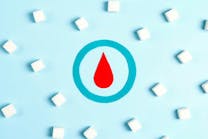Newer, more complex testing and the need to make test results available to clinicians faster are changing lab dynamics, particularly the laboratory information system (LIS). “The biggest question is what the lab will look like in the future,” says Curt Johnson, VP-Sales and Marketing for Orchard Software Corp. “With the conversion of anatomical pathology [AP], molecular testing, and clinical testing, it will not be long before the sign on the door reads: ‘Laboratory.'”
John Nolen, MD, PhD, director of laboratory strategy at Cerner Corp. agrees. “What you are seeing is a movement to a field just called ‘diagnostics.’ Reports — even radiology — cannot be siloed anymore. Clinicians want that total-care summary, so labs need a truly integrated system.” Having a totally integrated LIS means all diagnostic information can be in one database, says Johnson; hospitals would no longer need separate interfaces to other internal information systems.
Steven Hawn, LabSoft’s VP of Business Development, says, “The hospital information system (HIS) tends to be the core, and everything interfaces to that.” Where the HIS is not the core system, a standard HL7 interface is used to link the LIS to the information systems of individual departments (e.g., ER, OR, or ICU).
A truly integrated information system with a central database is easier to install and maintain if all parts of that system are from a single vendor. Joseph Stabile, product marketing manager for Horizon Laboratory Solutions at McKesson Provider Technologies, says: “Most use an interface engine by taking an HL7 feed and piping it to wherever they want it to go.”
Johnson says about 95% of all internal connections to the LIS use an HL7 interface: “The fundamental question for hospitals is, are they going to best-of-breed or all-inclusive?” For years, hospitals only looked inward when choosing information systems before they began establishing bidirectional links to physician practices and other hospitals. Nolen’s company offers a product for the inpatient environment with a Web-based interface solution that allows a hospital to build individual access points for clinicians. The growing popularity of digital pathology and genetic testing in diagnostics is forcing clinicians to demand more from their LIS.
Says Rick Callahan, Novovision’s VP-Sales and Marketing, “AP LIS vendors will directly network to as many pieces of hardware and software systems as possible. If that is not feasible, the most widely accepted approach is for the vendor, if it has the capability, to develop HL7 interfaces.” Callahan says HL7 standard interfaces have been commonly used for integrating, exchanging, and sharing information within and without the lab, and could become expensive because “… usually, AP LIS vendors charge for interface development as do vendors to which the AP LIS is being interfaced.” The use of the Web has become increasingly popular: “Some AP LIS vendors provide all of these as alternatives for clients to consider.”
Since all diagnostic images, even digital slides, are becoming part of what Nolen calls the total-care summary, LIS integration with all other hospital systems needs to be seamless. Johnson says Orchard took a step in that direction in 2006 when it released a CP/AP integrated solution with a single, centralized database designed for interdepartmental use.
Chris Callahan, VP-Product Management at Sunquest Information Systems, says his company has developed a “common generic pathology dashboard” as an extension of its AP LIS that sits on the desktop. Using an HL7 interface to the digital-pathology system, this structured documentation tool “makes it easy for pathologists to work with newer digital systems.” Like others, Callahan is waiting for establishment of standards and to learn what role the Digital Imaging and Communications in Medicine — DICOM — standard will play as an imaging interface.
While connecting an LIS to other systems is now routine, connecting it to instruments and devices can be complicated. “The communications with analyzers are not standardized,” says Hawn. “We will work with analyzer manufacturers, look at the data format, and write specific interfaces for these analyzers.”
Lisa Jean Clifford, CEO of Psyche Systems Corp., says her company’s LIS boasts a bidirectional interface to all lab-based instruments. “The instrument can receive orders from the LIS and report results back to the LIS,” she says. “A truly interfaced instrument can report back. And it can also alert you if the instrument is down or offline.” Because this LIS is interfaced with the HIS, its data is available to other hospital departments, she says.
Since the mid-2000s, McKesson has had a Web-based outreach solution that allows physicians to place orders, create barcode labels and get test results back electronically — whether or not they have an EMR. McKesson’s Stabile says his company uses a third-party middleware to connect individual instruments to the LIS, while Nolen says that although HL7 dominates the interface landscape when connecting an LIS to devices, “… we have partnered with manufacturers to create a certification program to standardize interface codes.”
Psyche’s Clifford says traditional HL7 standard point-to-point interface between labs and providers is effective but costly and IT-heavy. Usually, a bidirectional connection costs twice that of an unidirectional link — often cost-restrictive for smaller hospitals with smaller budgets. “In a traditional point-to-point interface to an EMR, the lab bears the cost,” she says.
By installing middleware, a direct link can be established between a physician’s EMR/PMS and Psyche’s information solutions via a secure Web connection. Data are exchanged through standard HL7, XML, and PDF formats, and this outreach module enables both order-entry and results viewing. The company’s outreach solution can accommodate mobile devices since “the new generation of pathologists is more wired and tech-savvy,” Clifford says.
Addressing interoperability issues has led to a renewed interest in Logical Observation Identifiers, Names and Codes (LOINC). Established in 1994, LOINC was essentially ignored. LOINC allows an LIS to encode lab results so those can be read by other departmental systems, physician practices, hospitals, and other labs. With passage of the 2009 Recovery Act and the HITECH Act, all healthcare providers and hospitals will be required to use an EMR. Sunquest’s Callahan says, “It is a lab-centric vocabulary.” Stabile says using LOINC as a standard is not easy: “Its 30,000 codes make mapping it daunting task for hospital labs.” To succeed as a communications standard among systems, they all must be able to support LOINC. “The end result? All LIS systems can be interconnected in a regional health network,” Callahan says.
With hospitals gobbling up physician practices and a rash of lab consolidations, establishing connections among various offsite information systems is more important than ever. Software developers are exploring newer technologies so hospitals and reference labs can establish those bidirectional links — called lab-provider links or LPLs — between themselves and allied physician practices. These links became even more important after the two government Acts were implemented; establishing them is challenging. A large number of physician practices have yet to roll out an EMR for reasons ranging from lack of stimulus money, to the belief that EMR time means seeing fewer patients.
Determining how a physician will communicate with an LIS depends on whether he has an EMR. John Detwiler, president/CEO of PathLogix Corp., says, “Many physicians resist an EMR; it saves no money or time.”
Web portals are a viable solution for those without, says Johnson, but the HITECH Act requires all data including lab results eventually will have to go into the EMR. Sunquest’s Callahan says his company provides Web-based outreach solutions, including a Web portal — the simplest way to establish an LPL. “We have a physician Web portal — a Web front-end to our lab system. If he does have an EMR, we interface with that. It is a solution loaded with interface templates predefined for each major vendor’s EMR.”
In offering lab-provider solutions to those with or without an EMR, SCC Soft Computer recently launched a new version of its physician-portal module, reports Fred Church, regional sales manager. “The new physician portal uses a pure HTML link [eliminating installation of an application on the physician’s PC] so doctors can place orders directly into an LIS and retrieve results. We also added a signature pad.”
Ease of use and cost effectiveness make a Web portal the best outreach solution for physicians sans an EMR, states LabSoft’s Hawn. His company offers three outreach modules: order-entry piece; remote draw schedule consisting of “a list of sent orders where samples are not yet drawn; and one through which a physician can check any of his patients’ results and even graph their historical results.” The company works with EMR vendors to provide another Web-based product that connects the lab’s LIS directly to a physician’s EMR through a virtual private network using HL7.
Novovision’s Callahan says the most efficient method for “real-time” information exchange is the use of HL7 interfaces: “We offer this capability, and many of our clients utilize this as their primary solution. We also offer a cost-effective alternative of using the Web to receive and send information.” Clients can send electronic requisitions to the company’s system application via the Web, then send results and messages back to a client’s unattended computer, regardless of whether or not the receiving physician has an EMR. If the receiving physician does have an EMR that is capable, Novovision can map the results sent directly into the EMR without intervention by the physician.
Before the HITECH Act, efforts were being made to improve interoperability among different vendors’ products. McKesson’s Stabile said in a recent MLO interview: “We have interfaced our lab solutions to all major HIT vendors, and they work well.” By design, Cerner Corp.’s solutions connect with other Cerner information systems. Nolen says Cerner provides a Web portal using an HL7 interface to achieve a bidirectional link between a lab and a physician’s office, and has been targeting larger reference labs which can connect an LIS to a Cerner hub, and get an electronic connection to company clients.
Novovision’s Callahan says, “While many labs request that AP LIS vendors interface bidirectionally to their clients’ HIS, the patient’s EMR, or to a physician’s practice-management system, we are receiving more requests to interface to clinical instruments [e.g., flow cytometers], and lab hardware [e.g., barcode labelers and stainers].”
Some vendors fill specific niches. PathLogix Corp. supplies AP software with an emphasis on surgical pathology. Detwiler says his company’s product offers to link a pathologist’s office with a hospital lab uses Microsoft’s Remote Desktop Connection which, he asserts, is an extremely secure Internet connection between computers. Additional software features are being added seamlessly, including synoptic reporting, the standardized reporting format used to designate specific types of cancers and the size of tumors.
Another specialty software developer is Axolotl Corp. According to Marketing Director Nicole Spencer, this company “connects all disparate systems across a region or state.” As states ramp up efforts to form regional health information organizations (RHIOs), vendors assume a larger role in supplying the software needed to create links among all hospitals, regional labs, and physician practices.
Axolotl currently works in six states on more than 200 RHIOs and uses its own EMR or other vendors’ to create a Web-based link to an HIS and to all other members of the regional network. All lab results, transcribed reports, and other pertinent clinical data are sent in real time directly to the physician’s EMR or to a printer or fax. Even if the physician does not have an EMR, Axolotl’s solution creates a virtual health record from all available patient data.
Software developers still need to work out some interoperability issues when it comes to connecting a hospital’s lab with physician practices; but, as McKesson’s Stabile puts it, “As EMRs become standard, LPL software will become part of the background.”
Richard R. Rogoski ([email protected]) is a freelance journalist based in Durham, NC.




